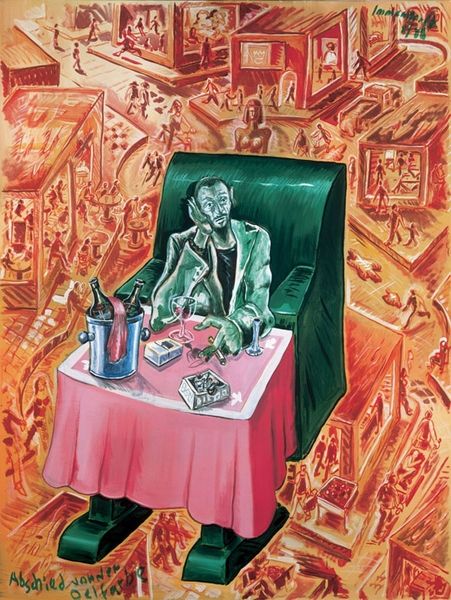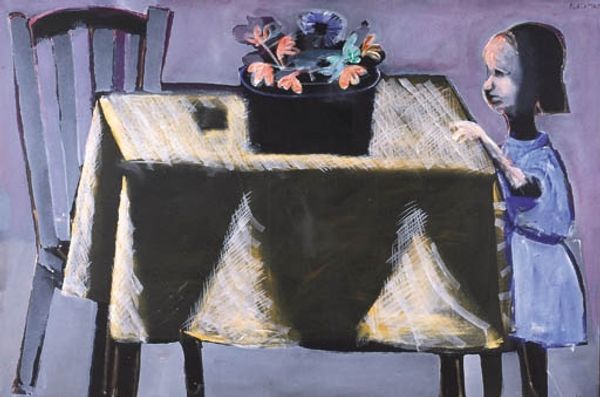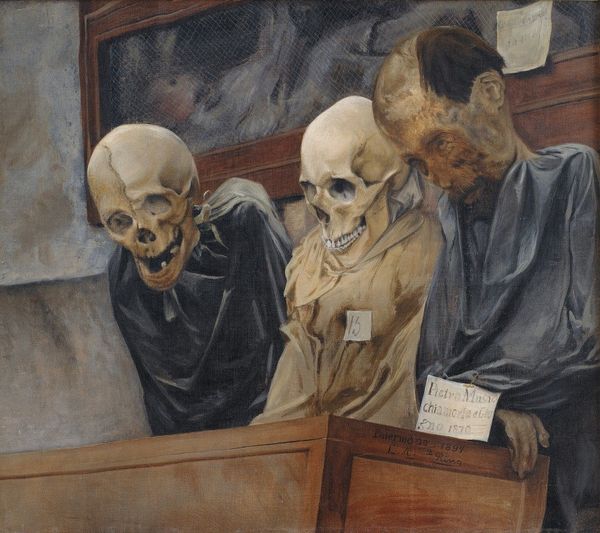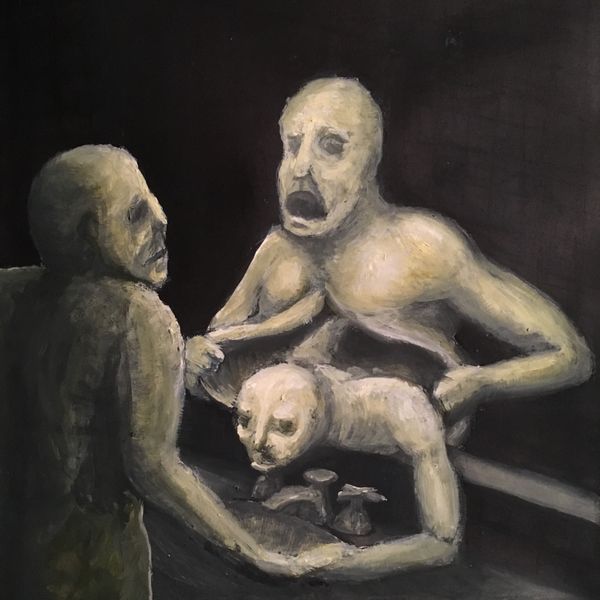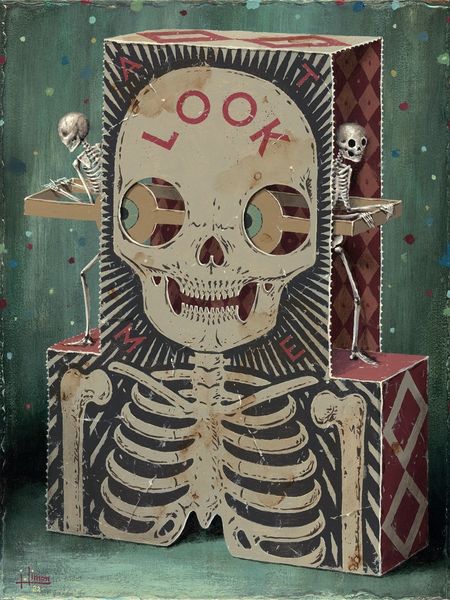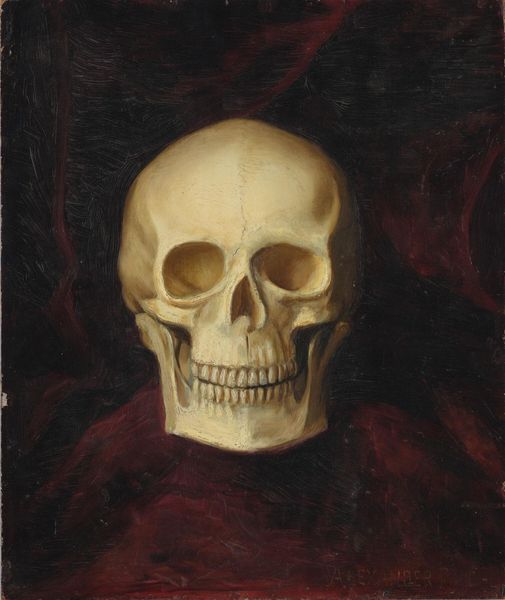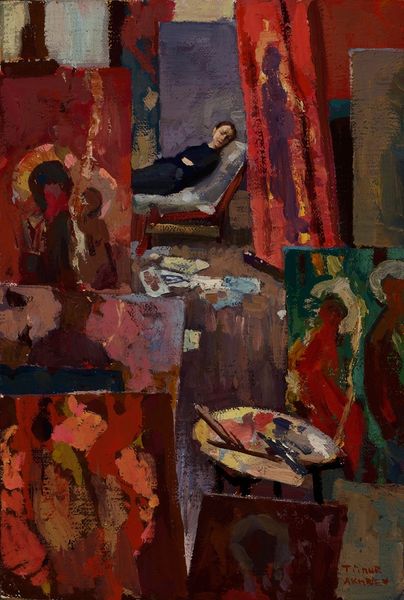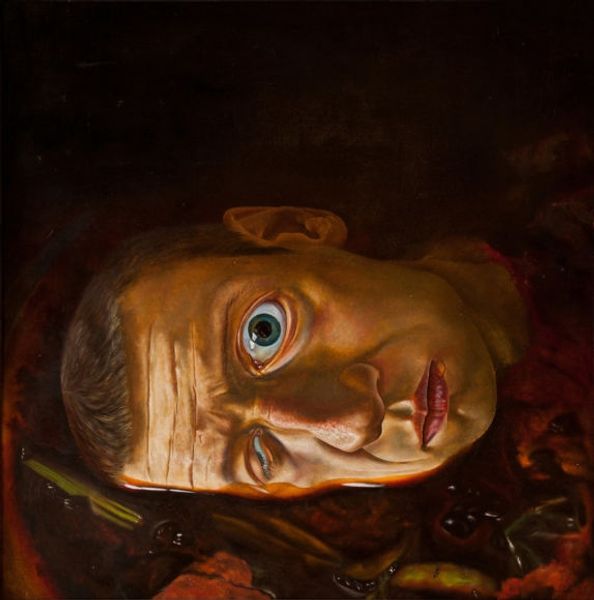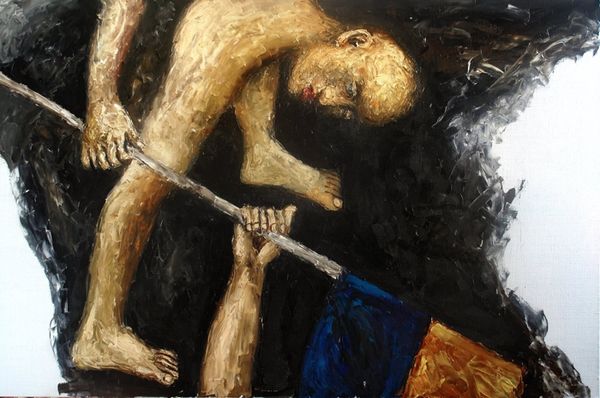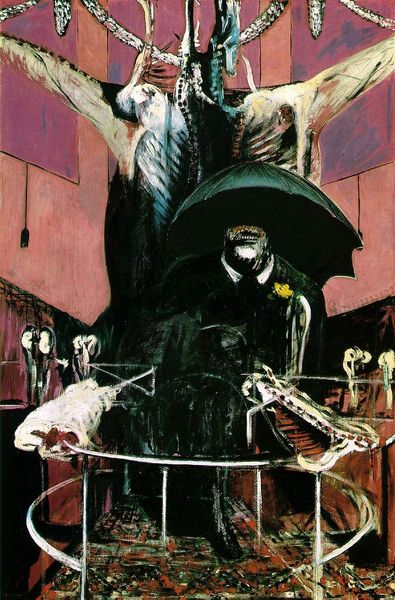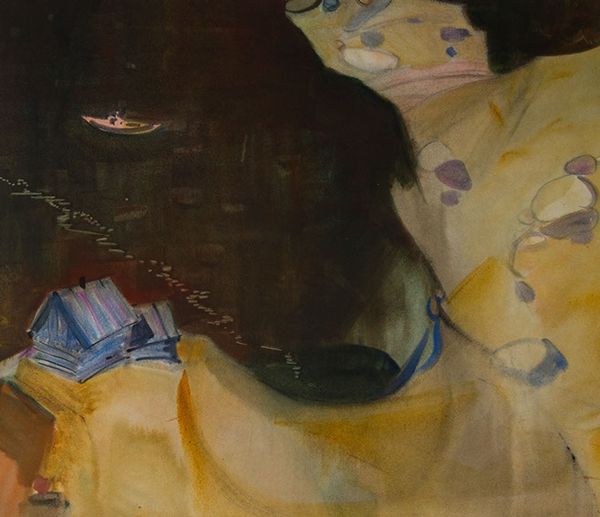
Copyright: David Bowie,Fair Use
Editor: Here we have David Bowie’s oil painting "Child in Berlin," created in 1977. I’m immediately struck by how the perspective skews upwards, focusing our attention on this child at the railing, but I’m struggling to really grasp what the artist wanted to convey, could you maybe share your initial observations about this work? Curator: Consider, first, the composition. The high angle suggests observation, the artist looking down upon this child in an interior space. The color palette, though muted, vibrates between umber and pale light; do you see how it pushes our focus onto the stark pallor of the child’s face? Editor: Yes, now that you mention it, the muted colors really amplify the effect; however, do you think that focusing too much on form risks ignoring how that choice connects to cultural background and narrative? Curator: Perhaps, yet consider the painting in dialogue with itself. Notice how the geometry of the staircase acts as a vector to create depth, only to then have it arrested in the space surrounding the child. Where might he be standing? On what platform does he exist? The interior does not answer our assumptions about domestic life. It renders it unstable. Editor: That’s fascinating! It sounds like, by considering it in this light, the artist might not be interested in creating any concrete cultural readings; rather, the interest rests more heavily on making visible the emotional undercurrents as experienced by the child through the expressive forms that shape it. Curator: Precisely. And this instability extends further in a web of semiotic potentials for those interested in thinking historically. Editor: Well, this deeper look into "Child in Berlin" has made me really appreciate how carefully arranged the entire pictorial surface actually is.
